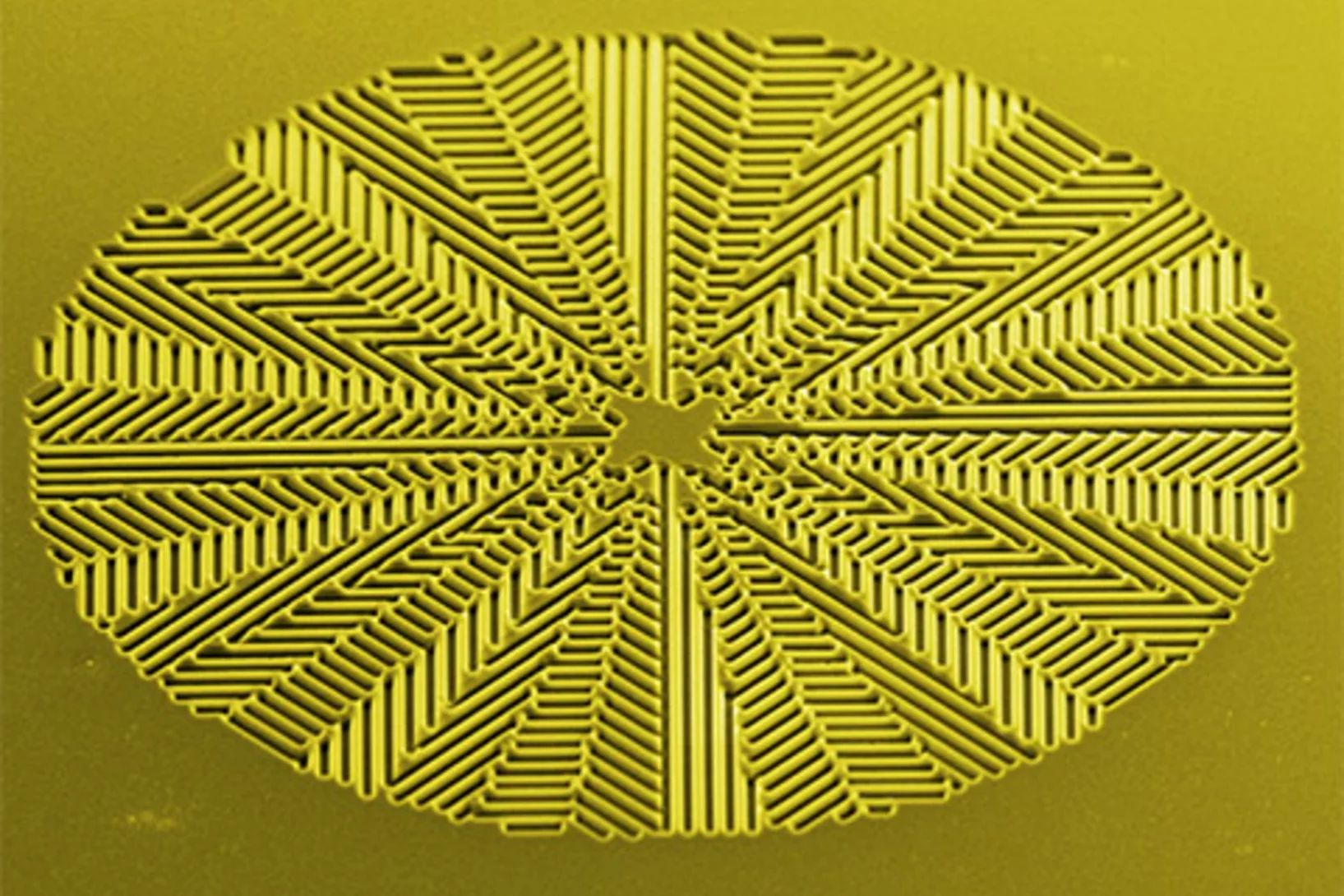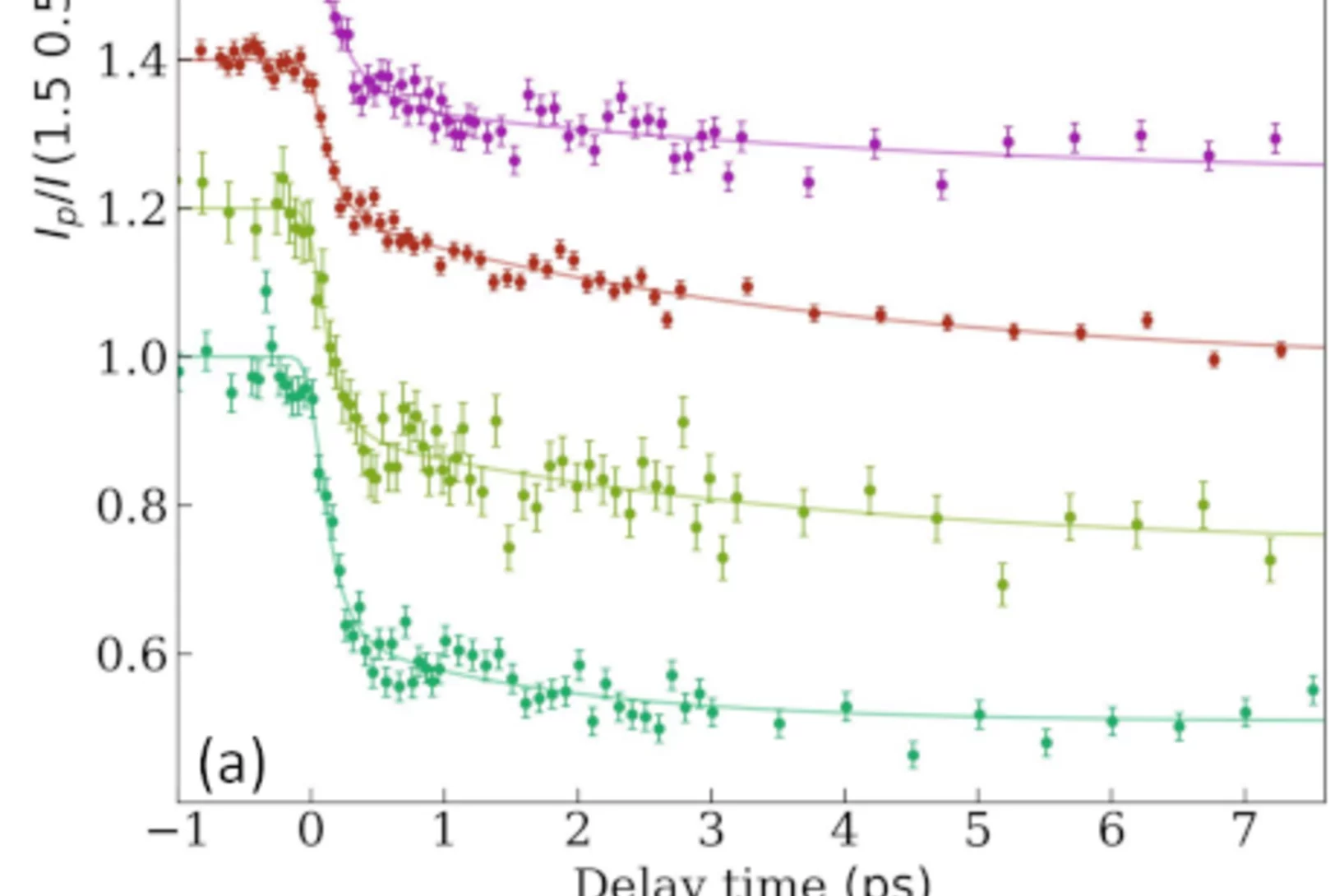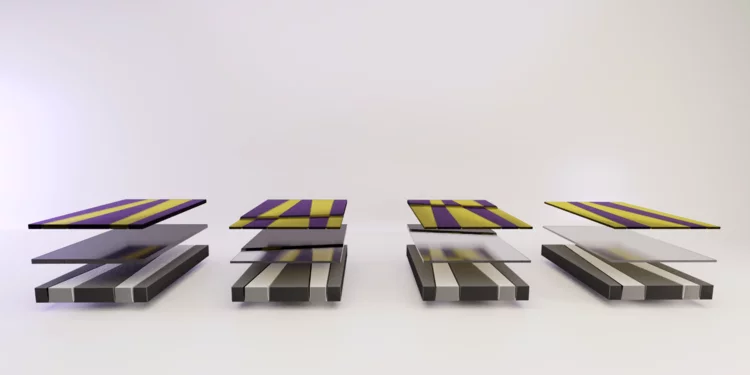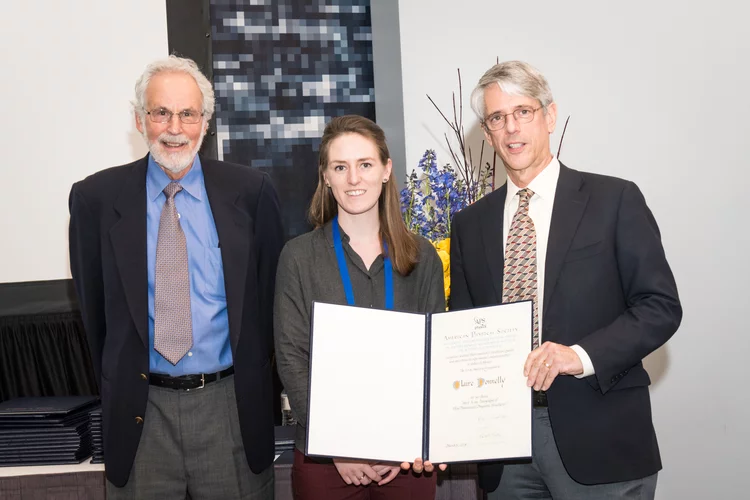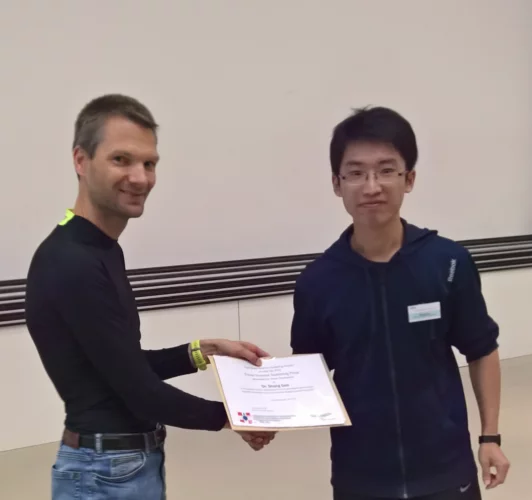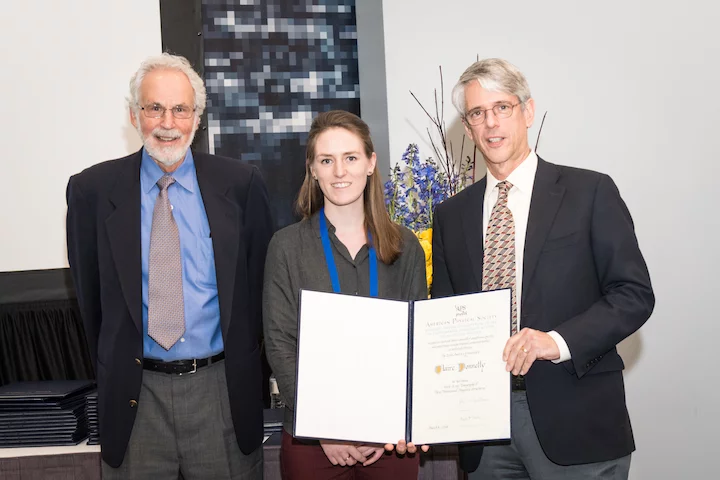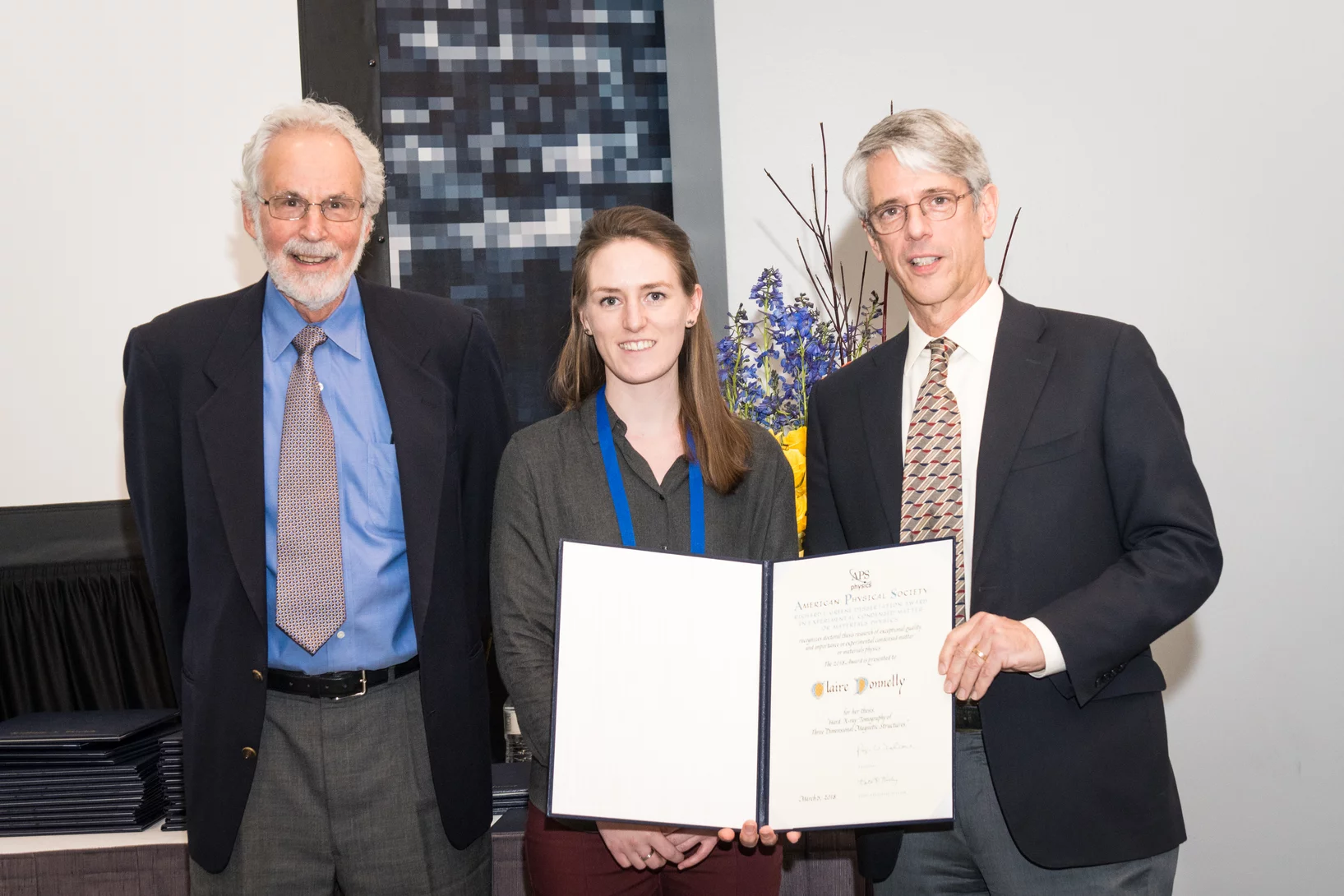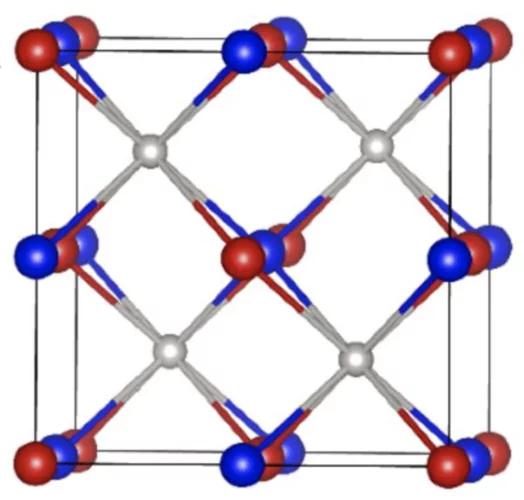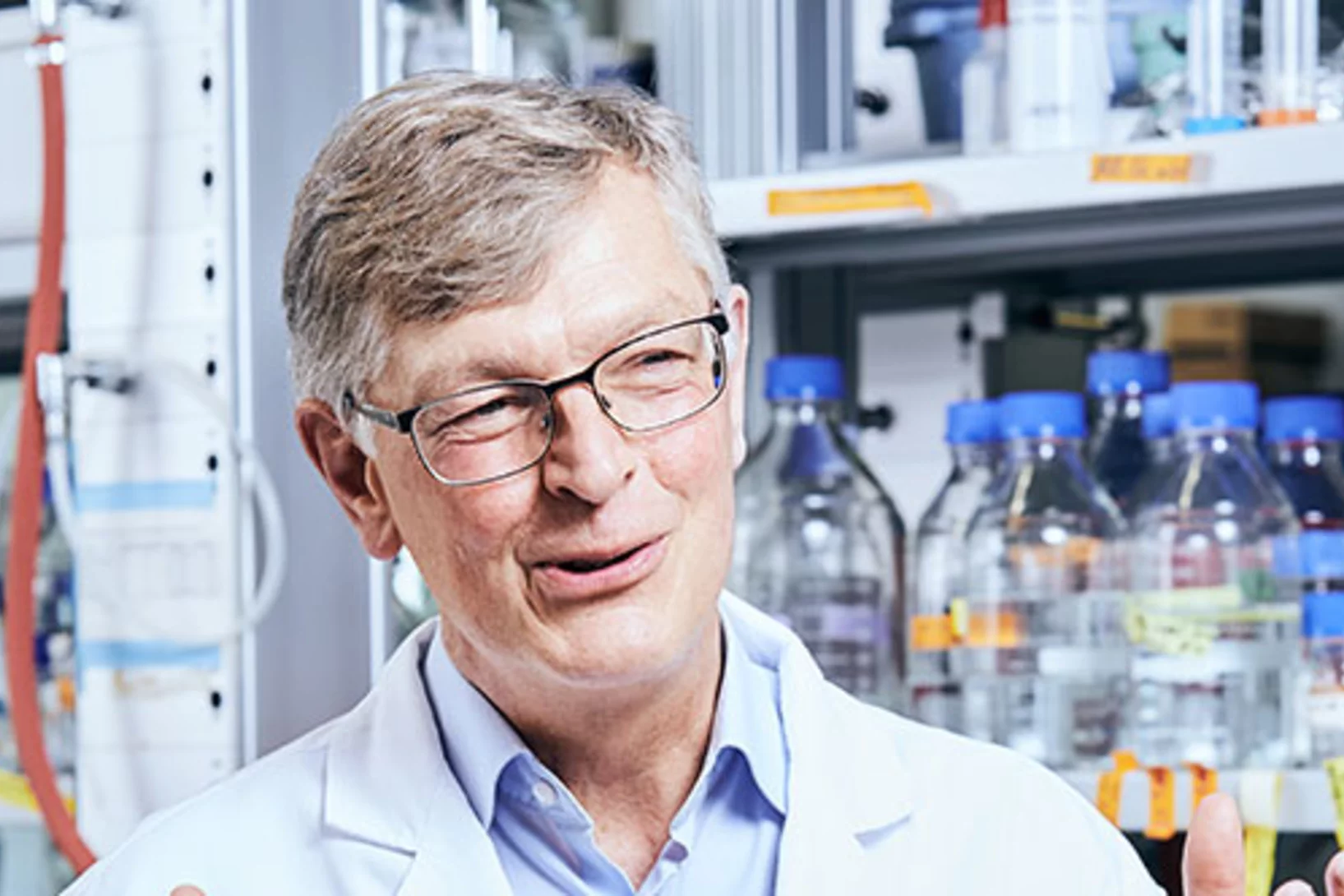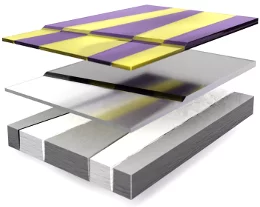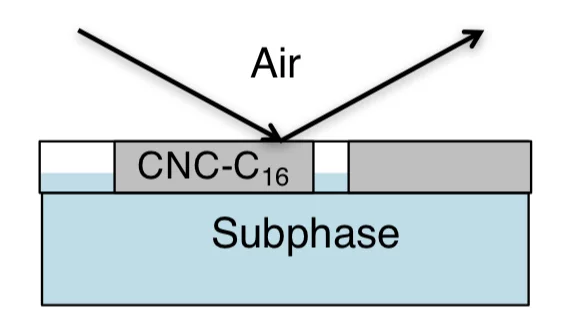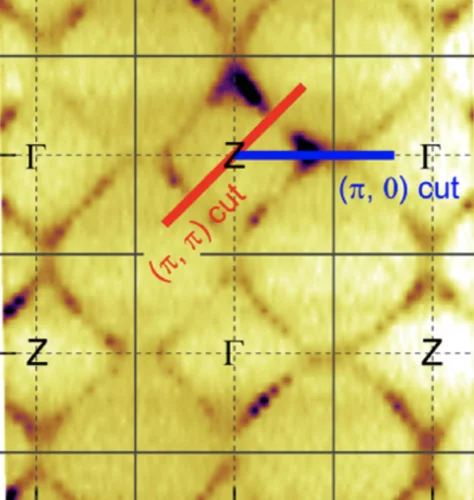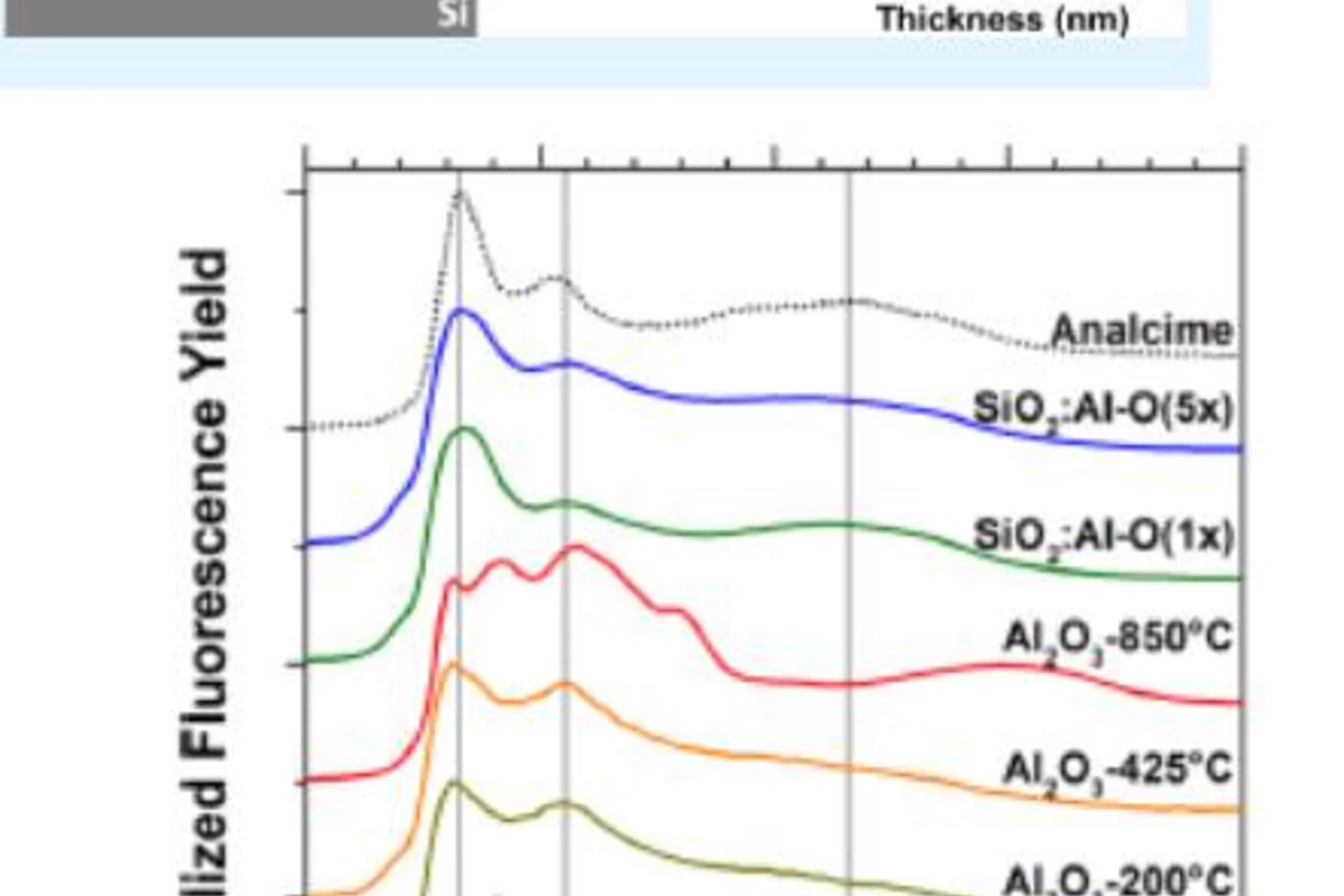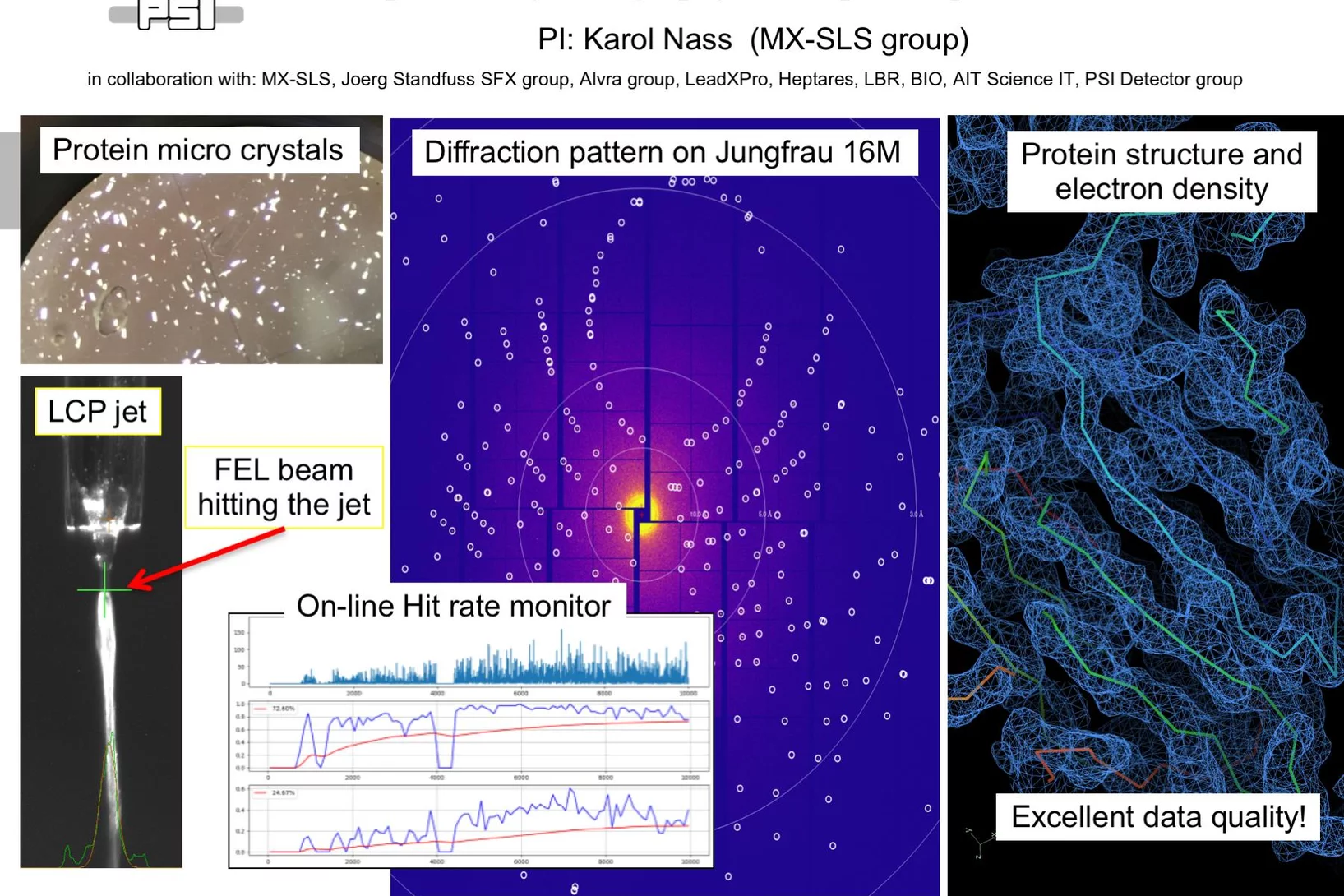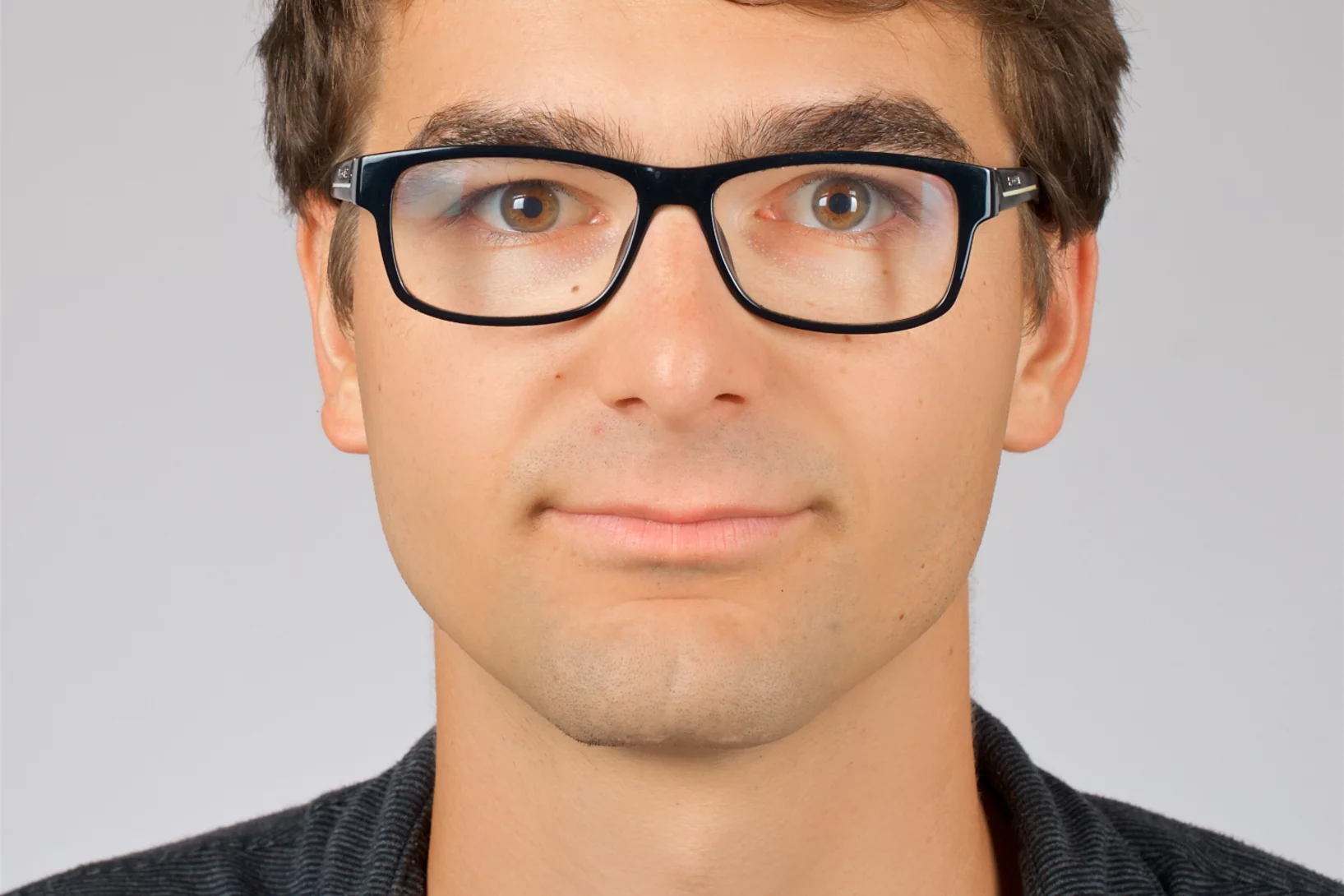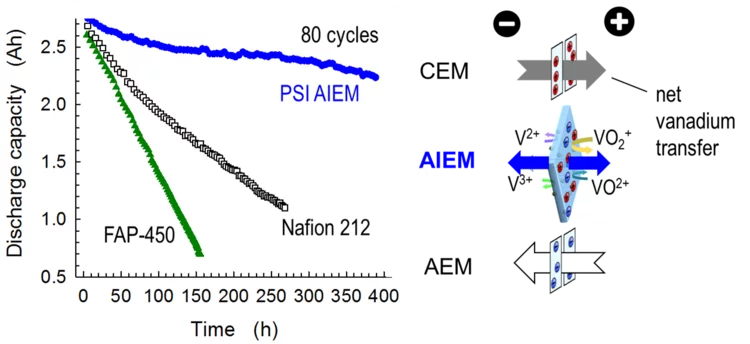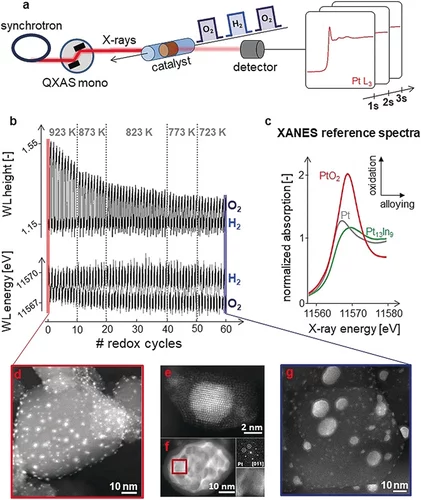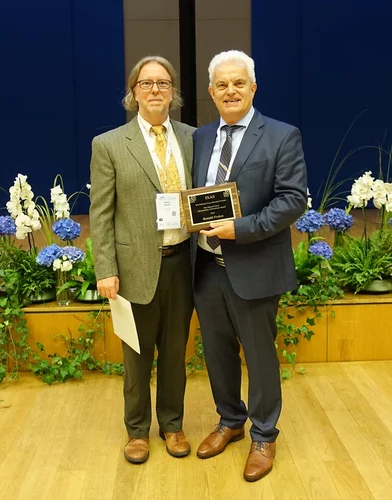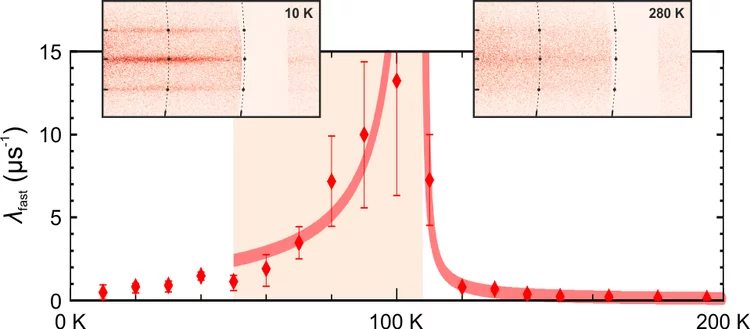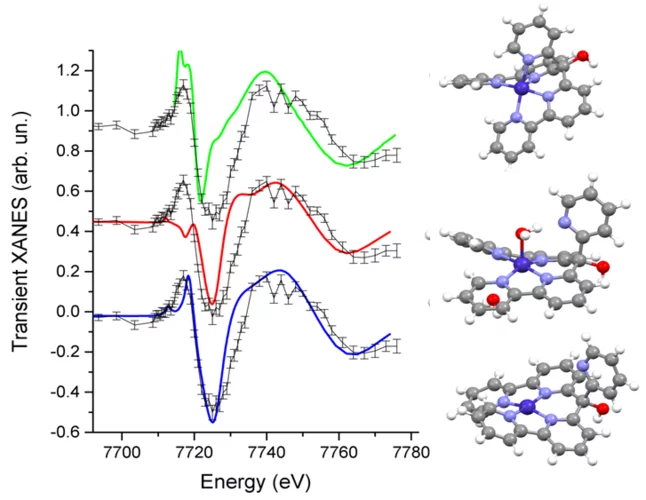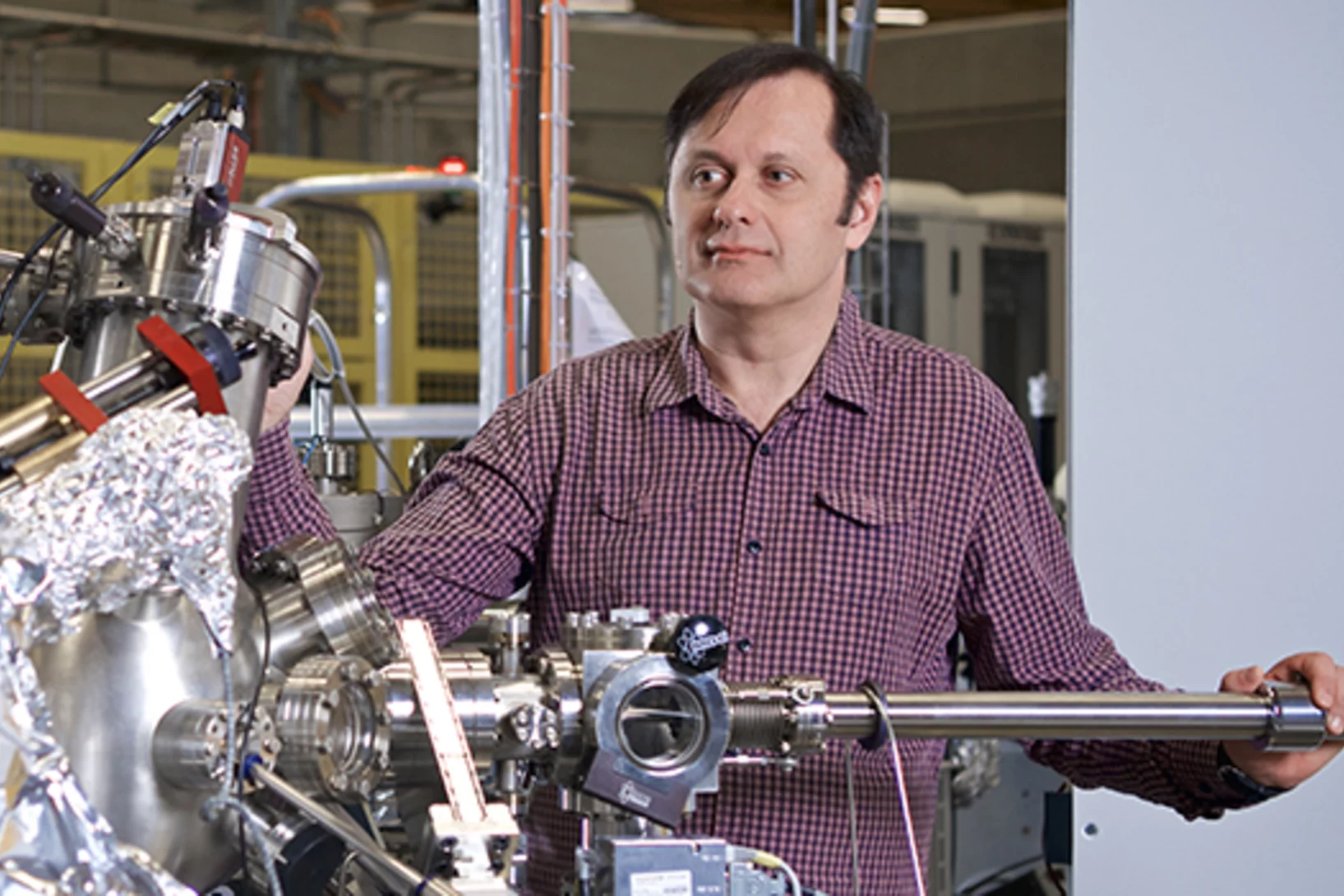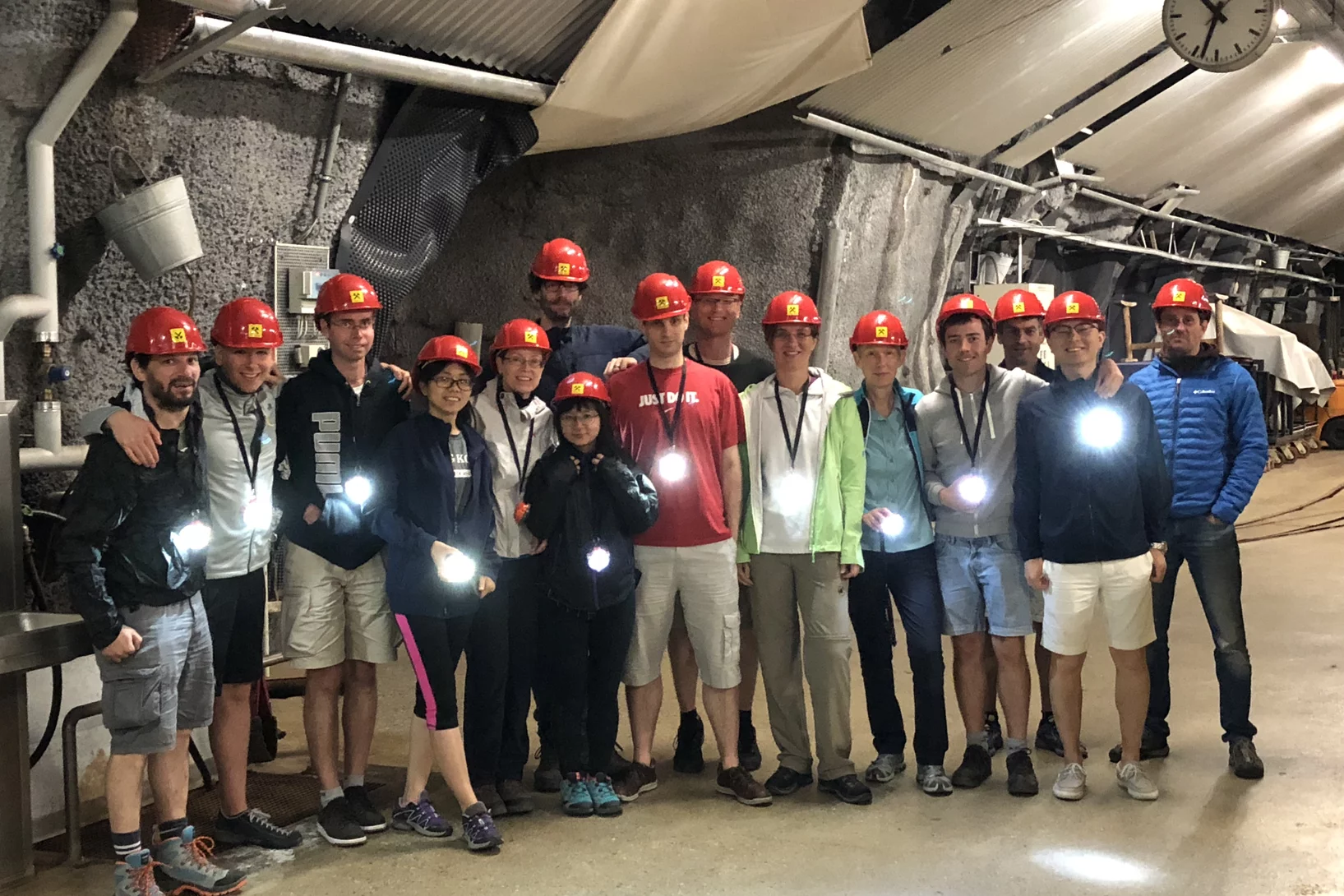Shifting away from nuclear energy, expanding solar and wind power, generating energy from biomass, reducing energy consumption. Switzerland is committed to becoming climate-neutral by 2050. An ambitious goal, which has become more urgent than ever due to the increasingly challenging geopolitical situation. How can a sustainable and resilient energy supply for Switzerland be established over the coming years? What's the optimal way to use renewable energy sources? What new technologies are especially promising? At PSI, researchers are seeking answers to these crucial questions.
Diamond: a gem for micro-optics
Our image of a diamond structure was published on the cover page of the September 2018 issue of the journal "Materials Today". The corresponding paper reports on the nano-frabrication of micro-optical elements in diamond.
Moving Atoms by Photodoping
Understanding how and how fast we can drive atoms to create a structural phase transition is of fundamental interest as it directly relates to many processes in nature. Here we show that a photoexcitation can drive a purely structural phase transition before the energy is relaxed in the material that corresponds to a “warmer” equilibrated state.
Multiferroics turned upside down
Experiments demonstrating the inversion of entire domain patterns in multiferroic crystals highlight just how versatile this class of materials is, and indicate a route to exploring novel functionalities.
Claire Donnelly dissertation research awards
In August 2018, Claire Donnelly was awarded the SPS Award in Computational Physics, sponsored by COMSOL, and the Werner Meyer-Ilse Memorial Award. We congratulate her on these awards as well as for the two awards received earlier this year: the ETH Medal for an outstanding doctoral thesis and the American Physical Society Richard L. Greene Dissertation Award, recognizing doctoral thesis research of exceptional quality and importance. These prizes are for her dissertation on “Hard X-ray Tomography of Three Dimensional Magnetic Structures”. Claire carried out her dissertation in the Laboratory for Mesoscopic Systems (ETH Zurich – Paul Scherrer Institute) in collaboration with the CXS group and the OMNY project, with experiments conducted at the cSAXS beamline, SLS, and Sebastian Gliga, a Marie Curie Fellow at the University of Glasgow. She will continue this research at the University of Cambridge with a Leverhulme Fellowship supported by the Newton Trust. We wish her every success! - Picture courtesy of the APS.
Shang Gao receives SGN Young Scientist Prize
Dr. Shang Gao was awarded the Young Scientist Prize of the Swiss Neutron Scattering Society for his high quality thesis and neutron scattering investigation leading to the discovery of a spiral spin-liquid state in the compound MnSc2S4 and of fast monopole hopping rates in the spin-ice compounds CdEr2X4. The prize is sponsored by Swiss Neutronics and is awarded annualy to a young scientist in recognition of a notable scientific achievement in the form of a PhD thesis. The photo shows Shang together with the SGN president Prof. Henrik Ronnow during the prize ceremony.
Claire Donnelly dissertation and research awards
In August 2018, Claire Donnelly was awarded the SPS Award in Computational Physics, sponsored by COMSOL, and the Werner Meyer-Ilse Memorial Award. We congratulate her on these awards as well as for two awards earlier on in the year: the ETH Medal for an outstanding doctoral thesis and the American Physical Society Richard L. Greene Dissertation Award, recognizing doctoral thesis research of exceptional quality and importance. These prizes are for her dissertation on “Hard X-ray Tomography of Three Dimensional Magnetic Structures”.
Claire Donnelly dissertation research awards
Claire Donnelly, Mesoscopic Systems (ETH Zurich - PSI), was awarded the COMSOL SPS Award in Computational Physics, the Werner Meyer-Ilse Memorial Award, the ETH Medal for an outstanding doctoral thesis, and the American Physical Society Richard L. Greene Dissertation Award.
Anomalous Hall effect in Weyl semimetal half-Heusler compounds RPtBi (R = Gd and Nd)
GdPtBi and NdPtBi belong to the Heusler family of compounds and are conventional antiferromagnets below 9 and 2.1 K, respectively. We present evidence for magnetic-field–induced Weyl physics in these compounds, namely, a chiral anomaly (negative magnetoresistance) and an anomalous Hall effect (AHE) with a large anomalous Hall angle over a wide range of temperature. The AHE and chiral anomaly have a similar temperature dependence, indicating their common origin.
A biotechnological revolution
Gebhard Schertler is head of the research division Biology and Chemistry at the Paul Scherrer Institute PSI and professor for Structural Biology at ETH Zurich. In this interview he talks about biological research at PSI and the future of drug development.
Magnetoelectric inversion of domain patterns
The inversion of inhomogeneous physical states has great technological importance; for example, active noise reduction relies on the emission of an inverted sound wave that interferes destructively with the noise of the emitter1, and inverting the evolution of a spin system by using a magnetic-field pulse enables magnetic resonance tomography2.
Modifying the contact angle of anisotropic cellulose nanocrystals: Effect on interfacial rheology and structure
Cellulose nanocrystals (CNC) are an emerging natural material with the ability to stabilize fluid/fluid interfaces. Native CNC is hydrophilic and does not change the inter- facial tension of the stabilized emulsion or foam system. In this study, rod-like cellulose particles were isolated from hemp and chemically modified to alter their hydrophobicity, i.e. their surface-activity, which was demonstrated by surface tension measurements of the particles at the air/water interface.
Three-Dimensional Fermi Surface of Overdoped La-Based Cuprates
We present a soft x-ray angle-resolved photoemission spectroscopy study of overdoped high- temperature superconductors. In-plane and out-of-plane components of the Fermi surface are mapped by varying the photoemission angle and the incident photon energy. No kz dispersion is observed along the nodal direction, whereas a significant antinodal kz dispersion is identified for La-based cuprates.
The negative charge density in Al-O monolayers on SiO2 surfaces
Single atomic layers of aluminum oxide embedded in SiO2 thin films, play an important role for the design of carrier-selective passivating contacts for high efficiency silicon based photovoltaic applications. Researchers from the Australian National University (ANU, Canberra, Australia), the Karlsruhe Institute of Technology (IT, Karlsruhe, Germany) and PSI have used synchrotron radiation to reveal the bonding configuration and local atomic surrounding of the Al-atoms in such surface oxide layers. The results corroborates theoretical calculations and contribute to a new model to explain the origin of the negative fixed charge in the Al-O/SiO2 stack, which has promising properties for a carrier-selective passivating contact for future silicon solar cells.
First serial femtosecond crystallography (SFX) pilot user experiment at SwissFEL
On the 7th to 12th of August 2018, a collaborative group of scientists from the Paul Scherrer Institute and members of the LeadXpro and Heptares pharmaceutical companies led by Karol Nass (PSI macromolecular crystallography MX-SLS group) performed the first serial femtosecond crystallography (SFX) pilot user experiment at the SwissFEL X-ray free electron laser (XFEL).
Fast-moving plot
How do dye-sensitised solar cells work, and what's behind the brilliant new mobile phone displays? The ultrashort X-ray pulses at SwissFEL reveal the chemical reactions that take place inside these devices and could help to make them even more efficient and cost-effective.
Pauling Entropy, Metastability, and Equilibrium in Dy2Ti2O7 Spin Ice
Determining the fate of the Pauling entropy in the classical spin ice material Dy2Ti2O7 with respect to the third law of thermodynamics has become an important test case for understanding the existence and stability of ice-rule states in general. The standard model of spin ice—the dipolar spin ice model—predicts an ordering transition at T ≈ 0.15K, but recent experiments by Pomaranski et al.
Welcome Jérôme Gabathuler
Join me in welcoming Jérôme, our new PhD-student in Markus Ammann's group.
He got his master in applied physics at the EPF Lausanne. During his master thesis, he worked on "Solar water purification using photocatalysis with a novel TiO2 nano-porous aerogel“. At PSI, Jérôme Gabathuler will be studying the surface of ice samples using X-ray excited electron spectroscopy at the Near Ambient Pressure Photoemission (NAPP) endstation at SLS. His thesis work is part of the SNF funded project entitled "Interfacial Chemistry of Ice: Photolysis and Acid-Base Equilibria in the QLL and Brine“.
Progress Towards Designed Membranes For All-Vanadium Redox Flow Batteries
Grid-scale storage of electricity is vital in energy scenarios with a high share of renewable electricity generation, such as wind and solar power. Redox flow batteries are particularly suited for intra-day time-shifting storage applications, yet investment costs need to be lowered for economic viability of the technology. We demonstrate a new ion conducting membrane that improves shortcomings of currently used materials and is potentially cheaper to produce.
Kinetics of Lifetime Changes in Bimetallic Nanocatalysts Revealed by Quick X‐ray Absorption Spectroscopy
The different reaction steps involved in repeated Pt13In9 segregation‐alloying are identified by XAS and kinetically characterized at the single‐cycle level.
The SLS congratulates Ronald Frahm for receiving the IXAS outstanding achievement Award 2018
The highest award of the international X-ray absorption spectroscopy (IXAS) society, the Edward Stern Outstanding Achievement Award, was presented to Prof. Ronald Frahm during the tri-annual IXAS meeting in Kraków, Poland in July 2018.
Material from PSI helps to check inconsistencies in the Big Bang theory
Shortly after the Big Bang, radioactive Beryllium-7 atoms were formed, which today, throughout the universe, they have long since decayed. A sample of beryllium-7 artificially produced at PSI has now helped researchers to better understand the first minutes of the universe.
Collective magnetism in an artificial 2D XY spin system
Two-dimensional magnetic systems with continuous spin degrees of freedom exhibit a rich spectrum of thermal behaviour due to the strong competition between fluctuations and correlations. When such systems incorporate coupling via the anisotropic dipolar interaction, a discrete symmetry emerges, which can be spontaneously broken leading to a low-temperature ordered phase.
Simon Corrodi successfully defends his thesis on the Mu3e fibre detector
Simon Corrodi has made important contributions to all aspects of fibre detector development, ranging from simulation and reconstruction via fibre characterization and mechanical integration to data acquisition and electronics. He has now successfully defended his thesis at ETH Zürich.
Structure of the Co(I) Intermediate of a Cobalt Pentapyridyl Catalyst for Hydrogen Evolution Revealed by Time‐Resolved X‐ray Spectroscopy
The mechanism of hydrogen evolution by cobalt polypyridyls catalysts is investigated. Pump-probe X‐ray absorption spectra measured at SuperXAS in the microsecond time range indicate that the pendant pyridine dissociates from the cobalt in the intermediate Co(I) state. This opens the possibility for pyridinium to act as an intramolecular proton donor, which can be used for the development of efficient catalysts.
Direct electric field control of the skyrmion phase in a magnetoelectric insulator
Magnetic skyrmions are topologically protected spin-whirls currently considered as promising for use in ultra-dense memory devices. Towards achieving this goal, exploration of the skyrmion phase response and under external stimuli is urgently required.
On the path to new high-performance transistors
The electronics industry expects a novel high-performance transistor made of gallium nitride to offer considerable advantages over present-day high-frequency transistors. Yet many fundamental properties of the material remain unknown. Now, for the first time, researchers at the Paul Scherrer Institute PSI have observed electrons while they were flowing in this promising transistor. For that they used one of the world's best sources of soft X-rays at PSI's Swiss Light Source SLS.
LUC goes underground
During this year's excursion we experienced the underground world on a guided tour through the Gonzen iron mine in Sargans. While walking up and down the impressive system of galleries and tunnels the extreme working conditions of the miners became palpable. After the 3.5 hours underground we happily returned to our labs at PSI.
Welcome Jonas Stegmaier
We warmly welcome Jonas Stegmaier in the Laboratory of Environmental Chemistry. He joined the Analytical Chemistry group on 1 July 2018.
Jonas Stegmaier studied Geology with a specialisation in Geochemistry at the Albert-Ludwigs-Universität Freiburg in Germany. During his master thesis he determined element and ion concentrations in river water for tracing hydrochemistry of contrasting, merging streams in South-West Germany.
At PSI, Jonas Stegmaier will be characterizing the performance of a new Inductively Coupled Plasma Time Of Flight Mass Spectrometer for trace element analysis in ice cores with the final goal to reconstruct Saharan dust transports and heavy metal pollution from metallurgy in Europe over the last 2000 years.
Araris Biotech among top 5 in business plan ranking at >>venture2018>>
Araris Biotech, a Spin-Off company in foundation from the Center for Radiopharmaceutical Sciences (Prof. Roger Schibli) at the BIO division, has been ranked in the TOP5 in the business plan competition of >>Venture>>(link is external). Araris is focusing on the development of a new method for the generation of antibody-drug conjugates (ADCs) with a well-defined, optimal antibody-to-drug ratio. The technology will be used to establish a drug development platform for targeted therapies and diagnostic applications. more info(link is external)
Stable complete methane oxidation over palladium based zeolite catalysts
Using targeted synthesis and in situ characterization a palladium catalyst with improved stability against sintering during methane oxidation was prepared.

